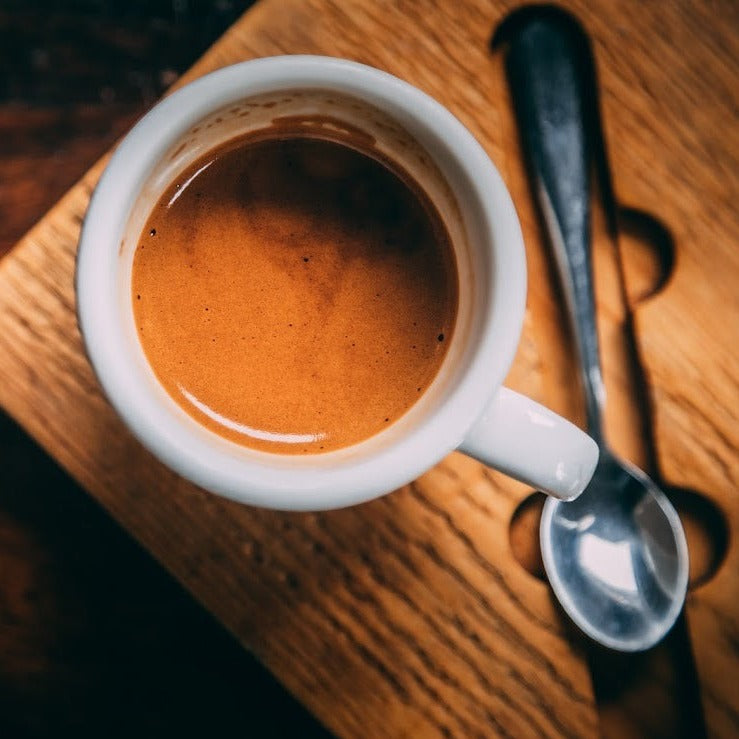SOE Single Origin Espresso – Highlighting Flavors from One Region
SOE Single Origin Espresso – Highlighting Flavors from One Region
Blog Article
Understanding Coffee Beans: the Journey From Espresso to Blended Coffee Beans

The Origins of Coffee: An International Viewpoint
While you might believe of coffee as a contemporary staple, its beginnings trace back centuries, intertwining with societies around the world. The tale starts in Ethiopia, where tale claims a goat herdsman named Kaldi uncovered the invigorating effects of coffee beans after seeing his goats romping vigorously after consuming them. This sparked rate of interest, leading to coffee's infect Arab investors that cherished the brewed beverage. By the 15th century, it got to Persia, Egypt, and Turkey, where coffeehouses came to be social hubs for discussion and culture.
As profession courses broadened, coffee made its means to Europe in the 17th century, swiftly getting popularity. It transformed from a magical beverage right into a day-to-day routine, intellectual exchanges and motivating gatherings. Each culture included its one-of-a-kind twist to coffee prep work, enhancing its history. This global journey highlights how coffee attaches us, transcending borders and unifying varied traditions with a basic bean.
Growing and Harvesting of Coffee Beans
As coffee's journey evolved, the focus changed to the cultivation and harvesting of details bean ranges, particularly those made use of for espresso. You'll find that espresso beans often originate from Arabica or Robusta plants, each offering distinct flavors. The perfect expanding conditions consist of high altitudes and rich, well-drained soil, which enhance the beans' quality.
During the harvest, selecting techniques vary. Timing is vital; you want to gather when the cherries reach peak perfection for optimum taste.
Once collected, the beans are prepared for handling, which is crucial in establishing their final taste. Understanding the farming and harvesting processes gives you insight into what goes right into your favorite coffee, enriching your appreciation for each mug.
Processing Techniques: From Cherry to Bean
Now that you have actually learnt more about harvesting coffee beans, let's explore exactly how those cherries change right into the coffee beans you love. You'll see just how different harvesting techniques effect flavor, followed by the crucial actions of fermentation and drying. Finally, we'll damage down the milling and grading process that establishes your coffee's top quality.
Harvesting Methods Explained
When it comes to coffee, recognizing harvesting techniques is vital, considering that they directly affect the flavor and high quality of the beans you delight in. Careful choosing includes hand-picking just ripe cherries, guaranteeing you obtain the best quality beans. Ultimately, the option of collecting strategy can considerably affect your coffee experience, so it's worth knowing how those beans made it to your mug.
Fermentation and Drying Out
After collecting, the following action in handling coffee beans play a substantial role fit their flavor. You'll find that fermentation is vital, as it helps break down the mucilage surrounding the beans, enhancing their taste account. Depending on the method, this process can last from a few hours to numerous days, with differing results based upon temperature and humidity.
Once fermentation is full, drying follows, which is just as essential. You can pick from sun-drying or mechanical drying out methods. Sun-drying permits the beans to take in flavors from the setting, while mechanical drying guarantees regular moisture degrees no matter weather condition. Appropriate drying out is vital to prevent mold and mildew and protect the beans' quality, eventually influencing your mug of coffee.
Milling and Grading Process
As fermentation and drying set the stage for taste growth, the milling and grading procedure guarantees that only the best coffee beans make it to your cup. This phase entails getting rid of the external layers of the coffee cherry, consisting of the parchment and husk. High-quality beans receive a higher grade, resulting in a richer coffee experience.
Roasting Methods: Opening Taste Prospective
When you roast coffee beans, the technique you select can dramatically impact the flavor profile. Understanding the connection between time, temperature, and roasting strategies is vital to revealing the potential of your brew. Allow's discover exactly how top article these aspects collaborated to create the best cup.
Roasting Approaches Clarified
While you might believe that all coffee roasting methods generate the same outcomes, the truth is that each method discloses special taste potentials in the beans. Drum toasting makes use of a rotating drum to evenly disperse warmth, enhancing caramelization and creating a well balanced flavor. Air roasting, on the various other hand, flows hot air around the beans, advertising a lighter roast with obvious acidity.

Effect On Taste Profile
Various toasting methods not only influence the process however additionally greatly affect the flavor profile of the coffee beans. Dark roasts, on the various other hand, bring out vibrant, smoky flavors, sometimes concealing the bean's one-of-a-kind features. Recognizing these subtleties aids you value the artistry behind your mug of coffee, enhancing your overall experience with every sip.
Time and Temperature Factors
To launch the complete flavor capacity of coffee beans, both time and temperature during the roasting process play substantial duties. When roasting, you'll find that higher temperatures can quickly develop flavors, but if you hurry it, you could end up with burned notes. Alternatively, reduced temperatures permit a more progressive flavor advancement, showcasing the beans' one-of-a-kind characteristics.

Timing is just as important; expanding the roast also long can lead to a loss of level of acidity and illumination, while too brief a roast could leave the beans underdeveloped. Finding that sweet place calls for practice and experimentation. By readjusting these factors, you can disclose the abundant, complicated tastes hidden within each bean, producing a truly impressive coffee experience.
The Art of Blending: Crafting Special Coffee Profiles

Begin by picking a base coffee that gives a strong structure. A bright Ethiopian bean can bring fruitiness, while a rich Brazilian coffee adds body.
As you blend, bear in mind that each combination tells a story. You're not just making coffee; you're developing an experience. Take go to these guys your time, preference regularly, and delight in the journey of finding your signature mix - Single Origin Espresso.
Brewing Techniques: Exactly How Preparation Affects Taste
Mixing coffee opens up a domain of taste possibilities, yet exactly how you make that blend can considerably affect your final cup. On the other hand, a pour-over highlights the coffee's clearness and brightness, best for showcasing delicate notes.
Espresso, with its high stress, creates a focused shot that highlights sweet taste and crema. If you like a lighter brew, take into consideration a cold mixture technique; it yields a smooth, much less acidic taste.
Readjusting variables like water temperature, grind dimension, and make time can transform your coffee's profile. Welcome the art of developing to uncover the tastes hidden in your coffee blends.
The Future of Coffee: Sustainability and Development
As the coffee industry develops, sustainability and innovation are coming to be vital for addressing ecological challenges and conference customer needs. You'll see that more coffee firms are adopting green practices, from sourcing beans fairly to carrying out lasting farming techniques. These shifts not only help the planet however likewise improve the high quality of the coffee you appreciate.
You might see innovations like biodegradable packaging and water-saving brewing approaches that reduce waste. Advanced technology, such as blockchain, is also becoming popular, ensuring transparency in the supply chain, which allows you to trace your coffee back to its beginnings.
On top of that, buying neighborhood areas and sustaining farmers via reasonable profession campaigns promotes a much more lasting coffee ecological community. As you drink your following cup, keep in mind that your options can add to a brighter future for coffee. By going with lasting brands, you're not just delighting in a beverage; you're making a favorable influence on the globe.
Often Asked Questions
What Is the Distinction Between Arabica and Robusta Beans?
Arabica beans are smoother, sweeter, and have a greater level of acidity, while robusta beans are stronger, extra bitter, and consist of more high levels of caffeine. You'll observe these distinctions in flavor and fragrance when brewing your coffee.
How Does Elevation Affect Coffee Bean Flavor?
Elevation impacts coffee bean taste considerably. Greater elevations create beans with brighter acidity and complicated tastes, while lower elevations commonly yield beans that are much heavier and much less nuanced. You'll discover these distinctions in your cup!
What Are the Wellness Advantages of Alcohol Consumption Coffee?
Consuming coffee can boost your energy, improve mental emphasis, and even improve physical efficiency. It's rich in anti-oxidants, might lower the threat of particular illness, and can advertise a much healthier metabolism when eaten in small amounts.
Can Coffee Beans Be Recycled for Brewing?
Yes, you can reuse coffee beans for developing, but the flavor may be weak. If you take pleasure in trying out, attempt recycling them in different methods, like cold mixtures or contributing to shakes for an extra kick.
How Should I Store Coffee Beans for Quality?
To maintain your coffee beans fresh, save them in an airtight container in an amazing, dark area. Stay clear of exposing them to light, dampness, or heat, as these elements can rapidly deteriorate their taste and scent.
Recognizing Coffee Beans: the Trip From Coffee to Blended Coffee Beans.
Currently that you have actually found out concerning collecting coffee beans, allow's discover just how those cherries change right into the coffee beans you enjoy.When you roast coffee beans, the approach you pick can drastically affect the flavor account - Single Origin Espresso.While you may believe that all try this site coffee roasting techniques produce the exact same results, the truth is that each method reveals distinct flavor potentials in the beans.Different toasting approaches not just affect the process but also significantly affect the flavor profile of the coffee beans
Report this page